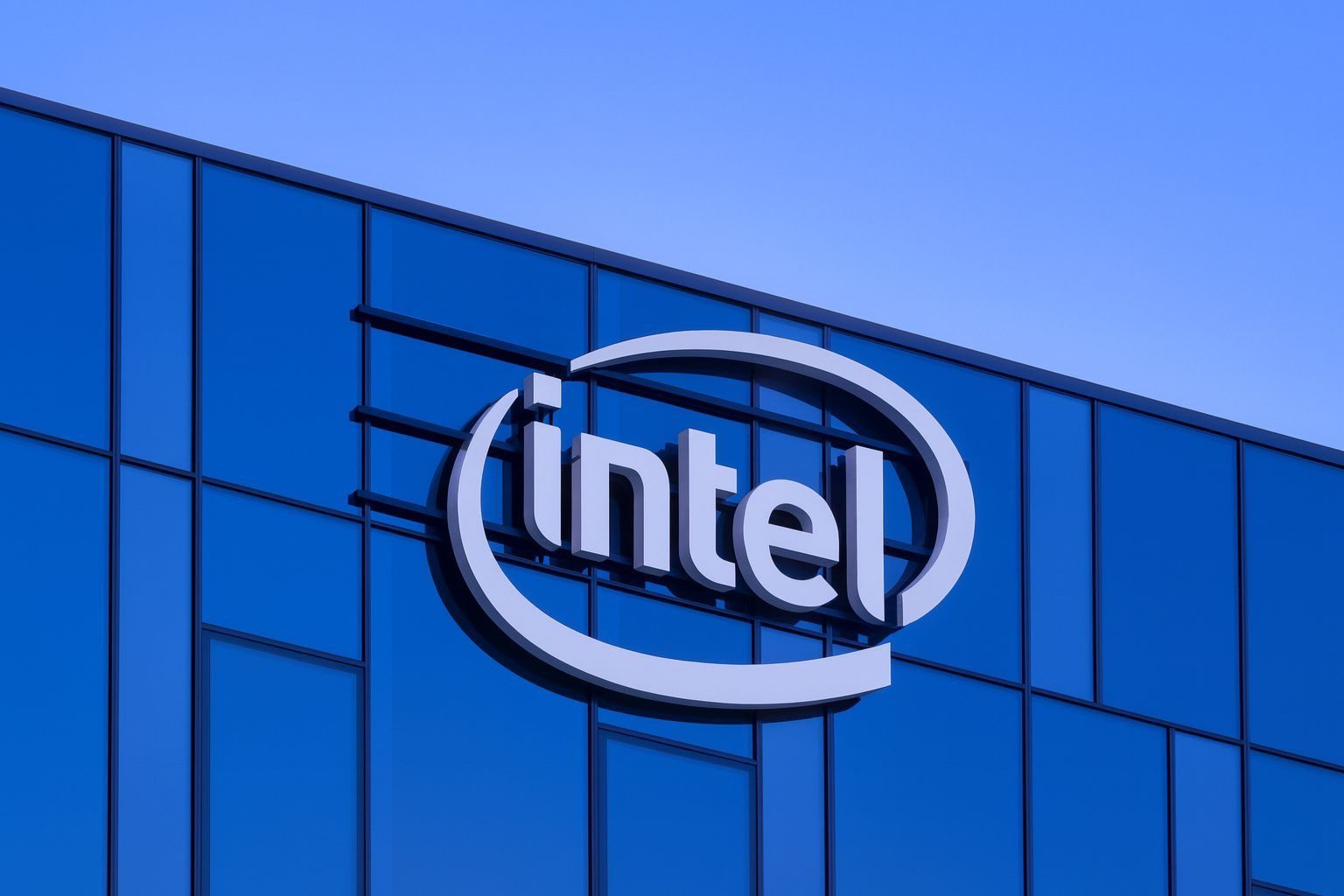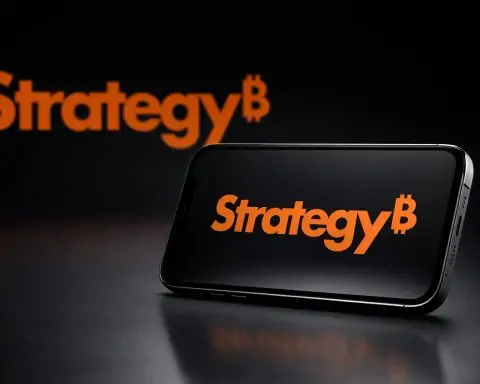Intel Corporation (NASDAQ: INTC) is back under the spotlight this Wednesday as its share price nudges higher, capping one of the most dramatic turnarounds in the semiconductor sector in years. The stock is trading against a backdrop of an unprecedented U.S. government equity stake, multibillion‑dollar investments from Nvidia and SoftBank, a renewed push into AI chips—and fresh legal tension with rival TSMC over a former executive now at Intel. [1]
At the same time, new filings and media reports out today highlight how big institutions are repositioning their Intel stakes ahead of the next earnings season, while Intel leans hard into its “AI PC” story with a fresh holiday marketing push.
Intel stock price today (INTC) – November 26, 2025
As of around 10:25 a.m. Eastern (15:25 UTC), Intel shares are trading near $36.50, up about 1.9% on the day from Tuesday’s close of $35.83. [2]
Intraday so far, the stock has:
- Traded between roughly $36.0 and $36.8
- Opened near $36.17
- Seen volume of about 13.3 million shares, lighter than the heavy trading days immediately after Intel’s October earnings report and investment headlines. [3]
The move extends a powerful 2025 rebound. After reporting a surprise return to profitability and announcing aggressive cost cuts plus new outside capital, Intel’s stock has almost doubled this year. Reuters noted that as of late October, shares were already up more than 90% year‑to‑date and at an 18‑month high following a strong third‑quarter profit beat. [4]
Yet the rally comes off a very low base. Intel swung to a nearly $19 billion loss in 2024, its first annual loss in decades, underscoring just how deep the previous slump was. [5]
On basic fundamentals:
- 12‑month trading range sits around $17.67 – $42.48. [6]
- Market cap is roughly $170–171 billion, with a headline P/E in the thousands due to still‑thin GAAP earnings. [7]
- Risk‑adjusted performance is skewed to the recent rebound: one‑year Sharpe ratio about 0.71, while the five‑year Sharpe is slightly negative, highlighting how rough the previous cycle has been. [8]
In short: Intel stock today reflects big expectations for an AI‑ and foundry‑driven comeback that is very much still in progress.
Fresh Intel headlines on November 26, 2025
1. Institutions reshuffle their Intel stakes
Several new reports dated November 26, 2025 show how large investors adjusted their Intel positions in the second quarter—data that’s being digested by traders today:
- Elo Mutual Pension Insurance Co cut its Intel stake by 7.8%, selling about 14,600 shares and ending Q2 with roughly 173,937 shares worth around $3.9 million. [9]
- BRIGHT VALLEY CAPITAL Ltd slashed its Intel holding by 72.5%, selling about 500,200 shares and retaining 190,000 shares—still its 6th‑largest holding, making up roughly 3.2% of the fund’s portfolio. [10]
- A day earlier, Waterloo Capital L.P. disclosed buying 14,720 Intel shares in Q2, valued at about $330,000, signaling that not all active managers are trimming. [11]
A separate article syndicated today highlights other big holders: Vanguard Group nudging its massive Intel position up by 2.3%, while several smaller firms—Westbourne Investments, Pacific Wealth Management, Econ Financial Services and Y Intercept Hong Kong—either initiated or expanded positions. Overall, roughly 64.5% of Intel stock is now in the hands of hedge funds and other institutional investors. [12]
What it means for the stock
These moves are based on past‑quarter holdings, not today’s price action, but they fit a clear narrative:
- Some institutions are taking profits after 2025’s huge rally.
- Others are leaning in, betting that Intel’s AI and foundry strategy will eventually justify today’s valuation.
It’s a reminder that big money is far from unanimous on how Intel’s turnaround will play out.
2. Analysts remain sharply divided on Intel’s upside
The new institutional‑ownership story is paired with fresh reminders of just how split Wall Street is on INTC:
- A widely circulated summary today notes that:
- Bank of America rates Intel “underperform” with a $34 target.
- JPMorgan keeps an “underweight” rating with a $30 target.
- Wells Fargo is more optimistic, with “equal weight” and a $45 target.
- Benchmark has gone all‑in with a “buy” rating and a $50 target.
- HSBC sits lower with about $26 per‑share fair value. [13]
- MarketBeat’s data, cited in those reports, shows a consensus rating closer to “Reduce/Hold”, with only 2 Buy, 24 Hold and 8 Sell recommendations and an average price target around $34.84. [14]
- On Public.com’s analyst tracker, 24 analysts collectively rate Intel a “Hold” as of November 26, 2025, with an average price target of about $32.02—below today’s share price. [15]
A separate deep‑dive narrative hosted on Simply Wall St / financialcontent concludes that while analysts have lifted their average Intel price targets into the mid‑30s to upper‑30s range after recent AI partnerships and restructuring steps, they still see the foundry effort and capital intensity as key risks. [16]
Translation: With INTC trading around $36–37, the stock is already above or near many published price targets, leaving less obvious “easy” upside in the short term unless Intel beats expectations again.
3. Intel’s AI PC holiday push: 2025 Buyers Guide goes live today
On the product side, Intel is using the holiday season to hammer home its “AI PC” message.
Today the company’s official newsroom published a new article: “2025 Holiday Buyers Guide – Top Intel‑powered AI PCs you can buy today.” It showcases a lineup of laptops and desktops powered by Intel Core Ultra (Series 2) processors and Intel Arc graphics from OEMs such as Acer, Asus, Dell, HP, Lenovo, MSI and Samsung. [17]
The guide includes models like:
- Acer Aspire 14 AI
- Asus TUF Gaming F16 and Vivobook 14 Flip
- Dell 16 Plus
- HP Omen Max 16 and OmniBook X
- Lenovo Legion and Yoga Pro 9i systems
- Several MSI “AI+” and Vector series laptops
- Samsung Galaxy Book5 Pro [18]
This follows Intel’s March 2025 launch of its Core Ultra Series 2 commercial AI PC portfolio aimed at business fleets, emphasizing AI acceleration, power efficiency and manageability through the vPro platform. [19]
Why it matters for Intel stock
- PCs are still a major revenue driver. Intel has been pitching 2025 as a pivotal year for a PC refresh cycle, with AI features intended to justify higher average selling prices. [20]
- Today’s consumer‑targeted campaign reinforces the narrative that Intel is pushing AI “everywhere”, not just in data centers but in mainstream laptops—important for investors betting on a multi‑year AI upgrade wave.
It’s not a direct financial announcement, but it keeps AI front‑and‑center in the Intel story just as holiday spending ramps up.
4. Legal overhang: TSMC lawsuit over ex‑executive now at Intel
Another key storyline shaping sentiment—though technically published yesterday—is a new lawsuit from Taiwan Semiconductor Manufacturing Co. (TSMC) targeting a former senior executive who has since joined Intel.
- Reuters reports that TSMC has filed a lawsuit in Taiwan’s Intellectual Property and Commercial Court against former senior vice president Wei‑Jen Lo, alleging he could misuse TSMC trade secrets after leaving for Intel. [21]
- Earlier coverage noted that Taiwanese prosecutors have launched an investigation into whether Lo misappropriated proprietary information when he moved from TSMC to Intel. [22]
Intel has so far declined to comment on the case. The lawsuit is directed at the individual, not Intel itself, but for investors it highlights:
- The intense competitive and legal pressure around cutting‑edge process technology.
- The scrutiny Intel faces as it recruits top engineering talent from rivals to accelerate its 18A and future 14A process nodes.
For now the case is an overhang, not a direct financial hit—but traders will be watching for any sign that regulators or courts expand their focus to Intel or restrict its use of certain technologies.
5. AI leadership shake‑up and new GPU ambitions
Earlier this month, Intel confirmed that its CEO Lip‑Bu Tan will personally oversee the company’s artificial intelligence efforts after its chief technology officer departed to join OpenAI. [23]
That reshuffle comes as Intel:
- Unveils a new data‑center AI GPU codenamed “Crescent Island”, designed for energy‑efficient inference workloads and set to launch next year. [24]
- Pursues a potential acquisition of AI‑chip startup SambaNova, in talks that could value the company below the ~$5 billion it fetched in a 2021 funding round. [25]
These moves signal that Intel is doubling down on AI accelerators after earlier Gaudi and Falcon Shores projects struggled to gain meaningful market share against Nvidia and AMD. [26]
For shareholders, the theme is clear: Intel is trying to buy time and technology as it races to re‑enter the lucrative AI chip market—but execution and integration risk remain high.
The 2025 Intel turnaround: from deep loss to “national champion”
To understand why today’s incremental headlines matter, it helps to look at the bigger 2025 picture.
Unprecedented government and partner capital
In 2025, Intel secured a trio of extraordinary capital injections:
- The U.S. government agreed to buy $8.9 billion of Intel common stock, giving it nearly a 10% non‑voting stake. Much of that is funded by reprogramming CHIPS Act grants. [27]
- SoftBank is building about a 2% stake in Intel, committing roughly $2 billion as part of a broader AI manufacturing partnership. [28]
- Nvidia announced a planned $5 billion equity investment in Intel at a price of $23.28 per share, tied to future collaboration on AI‑focused chip designs. [29]
These investments arrived on top of existing U.S. CHIPS subsidies and follow a brutal 2024 in which Intel lost nearly $19 billion and slashed thousands of jobs. [30]
The message from policymakers and partners is that Intel is being treated as a strategic “national champion” for Western semiconductor manufacturing—a narrative that has clearly helped fuel 2025’s stock surge.
Cost cuts, restructuring and foundry doubts
Under new CEO Lip‑Bu Tan, Intel has:
- Pushed for $10 billion in cost savings and a sharp reduction in capital expenditures, including major headcount cuts (around 25% from the end of last year, according to government filings and local reports). [31]
- Sold or partially spun out non‑core assets like Altera, and shifted its manufacturing strategy to be more selective and customer‑driven. [32]
- Doubled down on its IDM 2.0 strategy, trying to regain process leadership with its 18A node and build a profitable foundry business serving external customers including Microsoft—and possibly AMD and Apple down the road. [33]
Not everyone is convinced. A recent Citi‑linked analysis flagged ongoing foundry doubts, noting the high capital intensity and uncertain yields on 18A, even as Intel talks with potential big customers like AMD and Qualcomm. [34]
Still, the combination of government, Nvidia and SoftBank capital plus foundry ambitions is exactly why Intel shares have outperformed many peers in 2025—even while the underlying business is only gradually returning to modest profitability.
What Wall Street is watching now
Putting all of this together, several themes stand out for Intel shareholders and traders following INTC today:
- Valuation vs. fundamentals
- The stock price already embeds a large turnaround premium. Intel trades at a much higher forward P/E multiple than Nvidia or AMD, according to recent Reuters figures, despite lagging both in AI chip share and margins. [35]
- Consensus price targets (roughly $32–35) are mostly below today’s quote around $36.50. [36]
- Execution on AI GPUs and AI PCs
- Foundry customer wins and profitability milestones
- Concrete design‑win announcements from major customers (AMD, Apple, Qualcomm, large cloud providers) would help validate Intel Foundry Services and justify the government and partner capital pouring in. [39]
- Legal and political risk
- The TSMC lawsuit over alleged trade‑secret misuse by an ex‑executive is an early test of how far legal battles over advanced process knowledge might go. [40]
- The U.S. government’s 10% non‑voting stake is unprecedented for a major tech company, and some analysts worry about political influence or future policy shifts that could help—or hurt—Intel. [41]
- Earnings quality and margin recovery
- Third‑quarter results showed a return to profit with EPS of $0.23 and revenue around $13.65 billion, modestly beating expectations, but net margin remains under 1% and return on equity is barely above zero. [42]
- Analysts and institutional investors trimming stakes are clearly watching whether those early signs of recovery can be sustained into 2026.
Bottom line: Intel stock on November 26, 2025
On November 26, 2025, Intel stock is:
- Trading higher intraday, adding to a massive 2025 rebound.
- Supported by huge strategic investments (U.S. government, Nvidia, SoftBank) and ambitious AI and foundry plans.
- Facing meaningful risks, including legal friction with TSMC, talent turnover in AI leadership, and skepticism over whether its foundry can match TSMC and Samsung on yield and economics.
- Valued at a level where Wall Street is mostly neutral or cautious, with many analysts seeing limited near‑term upside from here based on their published targets.
For short‑term traders, today’s modest gain looks like a continuation of the post‑earnings optimism and institutional repositioning. For longer‑term investors, Intel remains a classic high‑risk, high‑reward turnaround: potentially pivotal for Western chip manufacturing and AI infrastructure, but still with a lot to prove operationally.
Important: This article is for informational and educational purposes only and does not constitute investment advice, a recommendation, or a solicitation to buy or sell any securities. Always do your own research and consider speaking with a licensed financial adviser before making investment decisions.
References
1. www.reuters.com, 2. www.benzinga.com, 3. stockanalysis.com, 4. www.reuters.com, 5. www.opb.org, 6. www.marketbeat.com, 7. www.marketbeat.com, 8. portfolioslab.com, 9. www.marketbeat.com, 10. www.marketbeat.com, 11. www.marketbeat.com, 12. somoshermanos.mx, 13. somoshermanos.mx, 14. www.marketbeat.com, 15. public.com, 16. simplywall.st, 17. newsroom.intel.com, 18. newsroom.intel.com, 19. newsroom.intel.com, 20. newsroom.intel.com, 21. www.reuters.com, 22. www.reuters.com, 23. www.reuters.com, 24. www.reuters.com, 25. www.reuters.com, 26. www.reuters.com, 27. www.opb.org, 28. www.reuters.com, 29. www.reuters.com, 30. www.opb.org, 31. www.opb.org, 32. www.reuters.com, 33. markets.financialcontent.com, 34. markets.financialcontent.com, 35. www.reuters.com, 36. www.marketbeat.com, 37. www.reuters.com, 38. newsroom.intel.com, 39. www.reuters.com, 40. www.reuters.com, 41. www.opb.org, 42. www.marketbeat.com







